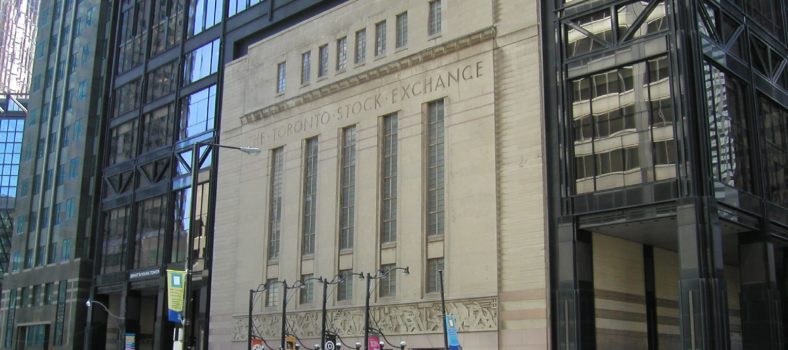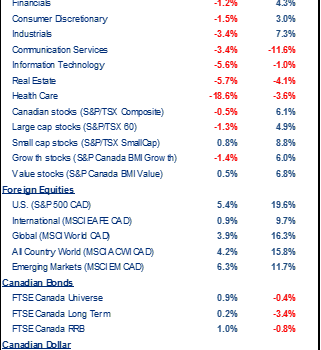 By Stephen Johnston
By Stephen Johnston
As Canada confronts the dual challenges of high inflation and low growth, the specter of stagflation looms large. Stagflation, which refers to below-trend economic growth combined with above-trend inflation, erodes real GDP per capita and poses significant challenges for investors. The current macroeconomic and regulatory environment in Canada has hindered capital formation, and without increased capital generation, sustained improvements in the standard of living are unlikely to materialize.
At its core, the issue is one of savings and capital. Capital formation is the backbone of economic growth and ultimately depends on the size of the pool of savings. Unfortunately, Canadians exhibit relatively low savings rates and this is exacerbated by a propensity to allocate what limited savings they have or even worse borrowed funds towards consumption rather than productivity-enhancing investments. In short, Canadians consume more than they produce, which in turn leads to declining capital formation and poor labor productivity. Canadian labor productivity investments, for instance, are nearly half of what is seen in the United States, creating a growing gap that continues to impede the country’s economic growth.
Even though it is difficult to precisely forecast the duration or severity of Canada’s current trends, investors would be wise to have some doubt that Canada’s stagnation will end quickly. As Goethe wisely noted, “Doubt grows with knowledge.” We must approach the issue with a forward-looking investment strategy, considering the limitations of past approaches. The economic conditions that fueled growth and returns over the last two decades are unlikely to deliver similar results in a higher inflation, lower growth environment.
In periods of stagflation, traditional investment strategies—such as the classic 60/40 portfolio of equities and bonds—face heightened risk. Historical precedent from the 1970s, when Canada last experienced stagflation, illustrates that investors with overly concentrated allocations in traditional assets were exposed to significant downside risk. The data is clear: in such environments, it is crucial to adopt a diversified strategy that incorporates assets with inflationary resilience.
Middle-class households, a key driver of consumption, are often disproportionately impacted by stagflation, facing both rising costs and stagnant wages. This phenomenon, known as the socioeconomic barbell effect, has been unfolding in Canada for decades, and this ongoing shrinking of the middle class complicates the investment landscape. The resulting shift in income distribution must be factored into investment decisions.
Despite the challenges of a stagflationary economy, there may still be opportunities for above trend growth if portfolios are structured correctly. Real assets—often referred to as “hard assets”—have proven well-suited for inflationary periods. These assets have historically outperformed in environments characterized by rising inflation. Canada is uniquely positioned in this regard, with a wealth of competitively priced real asset opportunities which are trading at relatively low valuations compared to equities and bonds, offering investors an inflationary hedge.
Conversely, some of Canada’s most popular alternative investments—particularly residential and commercial real estate— may face headwinds. Elevated and volatile nominal interest rates, combined with stretched valuations in key markets, suggest that real estate assets may underperform in a stagflationary environment – it certainly did in the 1970s. Investors should carefully assess their exposure to real estate and consider reallocating capital toward assets that are better positioned to benefit from inflationary and/or recessionary pressures.
In addition to real assets, a stagflationary economy may present opportunities in sectors less reliant on broad-based economic growth and more tied to specific return drivers. Two examples include:
1. Automotive Maintenance: In times of economic stress, consumers are more likely to delay new vehicle purchases, leading to an aging vehicle fleet. As a result, demand for basic automotive maintenance and repairs increases. This shift presents growth opportunities in automotive services and aftermarket parts, particularly as new car sales decline and the average vehicle age on the road rises.
2. Farmland: Canadian farmland represents a unique, value-driven investment opportunity, particularly in an inflationary environment. As a productivity-adjusted hard asset, farmland offers significant upside potential, especially given the inelastic demand for agricultural products. Canadian agriculture is highly export-driven, serving economies with more robust growth prospects. Farmland tends to perform well during stagflationary periods due to its ability to generate steady returns from the production of essential, non-depleting commodities.
Should the Bank of Canada and federal policymakers continue to grapple with the conflicting pressures of low growth, above trend inflation, and high nominal interest rates, it is likely that Canada will experience a prolonged period of economic stagnation. In such an environment, investors must look beyond the strategies that have driven returns over the last two decades. Allocating capital toward real assets, such as commodities, while exploring targeted investments in sectors like low-cost casual dining, automotive maintenance, and farmland, may be critical for preserving wealth and generating returns in a stagflationary market. By adopting a diversified, forward-looking strategy, investors may be able to mitigate the risks posed by stagflation and position their portfolios for long-term success.
Stephen Johnston is a director of Omnigence Asset Management – a multi-strategy alternative asset manager with almost $1 billion in capital across its partner funds in farmland and private equity. Stephen has a BSc. (Genetics, 1987) and a LLB from the University of Alberta (1990) and an MBA (1994) from the London Business School.




